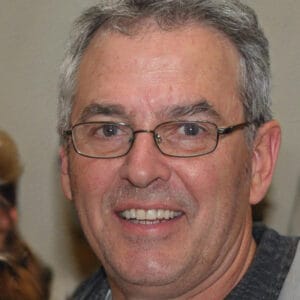Table of Contents
ToggleAre you considering ways to contribute to environmental sustainability while also benefiting your home?
Rain barrels could be your answer. These simple yet effective systems for rainwater harvesting are increasingly popular for homeowners and gardeners alike. They offer a way to conserve water, lower your utility bills, and provide your plants with a natural water source.
But what exactly are rain barrels, and how do they work? How do you go about installing one? Stick with us, and we’ll explore the ins and outs of rain barrel systems.
Key Takeaways
- Rain barrels are a straightforward and eco-friendly solution for water conservation. They collect and store rainwater from your roof that can be used for various household purposes.
- If you’re looking to reduce your water bill and give your plants a more natural hydration option, rain barrels are an excellent choice. They’re also a step towards sustainable living.
- Gain insights into the workings of rain barrels and learn their installation process, enhancing water conservation efforts at home.
Definition and Purpose
So, you’re wondering about rain barrels, right? Well, let’s chat about that.
Picture a container catching and storing the rain that falls on your roof. Rather than letting that water go to waste, a rain barrel helps you save it for a sunny day. This is a great way to conserve water, and it’s a green practice that’s really catching on.
Why use a rain barrel? Well, there are several reasons. For one, it helps you conserve water. You’re collecting and storing rainwater that would otherwise be lost, and this reduces the demand on your local water supply. It’s a positive step towards more sustainable water use.
Moreover, rain barrels provide an alternative water source. You can use this water for various outdoor and indoor activities such as watering your lawn, garden, or houseplants. It’s a smart and sustainable way to keep your green spaces looking great.
Rain barrels also play a role in rainwater harvesting. This is a practice where you capture and store rainwater to be used in the future for things like irrigation or other non-drinking purposes.
By using rain barrels, we can all do our part in water conservation efforts and lessen our environmental footprint. So, in a nutshell, rain barrels are all about conserving water, encouraging sustainable practices, and offering a dependable and environmentally friendly water source.
Cool, right?
Benefits of Rain Barrels
Rain barrels are a fantastic addition to any sustainable water management setup. They come with a whole lot of perks. Let’s talk about the benefits:
- Saving money: Collecting rainwater can make a big difference to your water bills. You can use the collected rainwater for many household tasks like watering your plants, washing your car, cleaning outside spaces and even mopping your floors.
- Conserving water: When there’s a drought, rain barrels offer a dependable source of water. This helps us save water and takes some pressure off our city’s water supply, helping to protect our finite natural resources.
- Managing stormwater: Rain barrels are a great tool for stormwater management and for keeping our water clean. They catch harmful stuff, like pesticides, fertilizers, and animal waste, before it can get into natural bodies of water, thus helping to protect the environment.
- Preventing floods and protecting soil: Rain barrels can lower the amount of rainwater in your yard, which helps prevent flooding and soil erosion. This can keep your home’s foundation safe, stop your lawn from getting damaged, and keep your soil rich in nutrients.
- Helping your plants grow: Rainwater collected in barrels is free of treatment and additives. Watering your plants with this clean, chemical-free water can help them grow healthier compared to when you use tap water.
To get the most out of your rain barrels, you should keep them well-maintained. A good rain barrel purchasing guide can help you pick out a top-quality barrel. Regularly cleaning your barrel, checking for leaks, and protecting it from freezing temperatures are all part of good maintenance.
If you make rain barrels a part of your water management strategy and take good care of them, you’ll be doing your part for a greener, more sustainable lifestyle.
How Rain Barrels Work
Rain barrels are a fantastic way to manage water sustainably, capturing and storing rainwater that you can use around the house. Let’s break down how these handy barrels work.
It starts with collecting rainwater from the roof and directing it into the barrel. Most rain barrels can store between 40-60 gallons of water. As the rainwater trickles down the gutter and the downspout, the barrel gradually fills up.
When you need to use the stored water, there’s a spigot at the bottom of the barrel. You can simply turn it on to water your plants or hook up a drip irrigation system. But remember, like all things, rain barrels need some TLC to keep them in good shape.
That means regular check-ups for leaks, cleaning out any rubbish, and making sure the overflow valve is doing its job.
And if you’re thinking, ‘Hey, I need more water than that,’ you’re in luck! You can link your rain barrel to a second one, increasing your water collection.
Setting up a Rain Barrel System
Thinking about setting up a rain barrel system at your place? That’s a brilliant idea! Let’s chat about how to make that happen, while also touching on some important aspects like functionality, uses, legalities, pros and cons, the different kinds available, and how to keep them clean.
The process of setting up a rain barrel system isn’t too complex, and if you follow these steps, you should be good to go:
Installing your Rain Barrel
- Start by finding the right spot for your rain barrel. Ideally, it should be near a downspout and on stable ground.
- Next, install a rain barrel diverter. This nifty device will help guide water from your downspout right into your barrel. Make sure the connection is secure to avoid any water leakage.
Maintaining your Rain Barrel
- Keep an eye on your rain barrel. Look out for any signs of damage or leaks. If you notice anything amiss, take action immediately by repairing or replacing the affected parts.
- Also, remember to clean your rain barrel at least once a year. This will help prevent debris buildup and the growth of algae or bacteria.
Follow these steps, and you’ll have a fully functional rain barrel system in no time!
Frequently Asked Questions
What Is a Rain Barrel Used For?
You know, rain barrels are pretty handy. They’re basically big containers that catch and store rainwater. What’s that good for, you might ask? Well, there’s a bunch of uses. For instance, you can use the collected water to quench your garden’s thirst or give your car a good rinse.
The good thing about this is, it’s all about saving water. So, if you’re eco-conscious and always looking to do your bit for the environment, this is a great way to conserve water. Plus, it can help you cut down on your water bill – now who wouldn’t love that? And, you’re not using up as much water from the city’s supply.
All in all, a rain barrel is a pretty neat tool to have around. It’s a win for you, a win for your plants, and a win for the environment.
What Are the Disadvantages of a Rain Barrel?
There are a few downsides to using rain barrels that you might want to consider. For starters, during dry seasons, it can be a real challenge to fill these barrels up. Also, there’s the risk of the collected water getting contaminated. If you use a lot of water, a rain barrel might not be able to provide enough to meet your needs. And don’t forget about the threat of freezing in colder climates – these barrels aren’t immune to the cold! Lastly, if you’ve got a wooden barrel, you can expect to be doing a lot more maintenance than with other types.
Is Collecting Rainwater Illegal in Ireland?
In Ireland, there’s no law against gathering up some rainwater. It’s a smart move for many reasons, such as conserving water, reducing runoff, and supplying your garden with free water. You can catch the rain in a variety of ways, like using rain barrels or cisterns.
What Happens When a Rain Barrel Is Full?
So, what exactly happens when a rain barrel is chock-full? Well, there’s a clever mechanism in place, called an overflow valve, that steps in to handle any surplus water. This feature makes sure the extra water is safely funnelled away, saving the barrel from any potential harm. Plus, it’s a great way to make the most of water storage and ease the burden on our city’s water supply.






